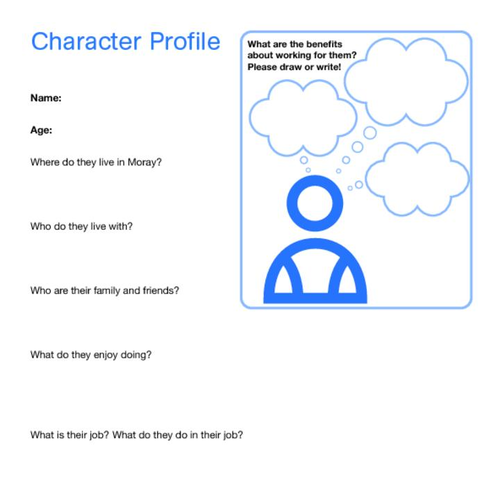Character profiles are developed by the co-design team and solutions are then designed around them. The characters capture common stakeholder groups.
When we are working in groups that contain both people using and providing a service, increased emphasis may be placed on the members of the group who have lived experience to share their perspectives. This can be uncomfortable for individuals and also neglects to include the knowledge amongst other group members. One way around this is to work together to create characters, or ‘ personas' that can act as a sum of all the groups experiences. The characters developed using these character profiles can then be used throughout the design process to refer back to and bounce ideas off. Character profiles can be developed for lots of different roles as well as for people using a service - you could create a character for each member of a team, or for each stakeholder in a situation.
Consider all of the stakeholders using and delivering the service.
For each group of stakeholders, create a blank character template with key questions that you would like to build a character around.
Character profiles for people using the service can focus on where they live, who they live with, what they do during the day / evening, what barriers they face and changes they would like to see. Character profiles can also be created for people delivering the service and can focus on areas like what they enjoy about work, how they like to learn and skill-sets.
We leave space for drawing and doodling if groups would rather not write.
When introducing the activity to the group, it can be helpful to remind them that this is a fictional character. You can reinforce this by locating the character in a fictional world they know, such as a soap opera, film or novel.
Once the group have a good grasp of the task, encourage them to fill in their sheet to each ‘build' a character. It can be useful to explain to the group that you will be using this character again in the design process. They can also be used in learning and development activities.
Bring the characters to life by creating a picture mood board using art materials and magazines. Take photographs of the characters. For a ‘homework’ activity you can give your group a problem scenario for their character and ask them to design solutions. This is a way to spot design opportunities. Pilotlight Substance Misuse Characters

